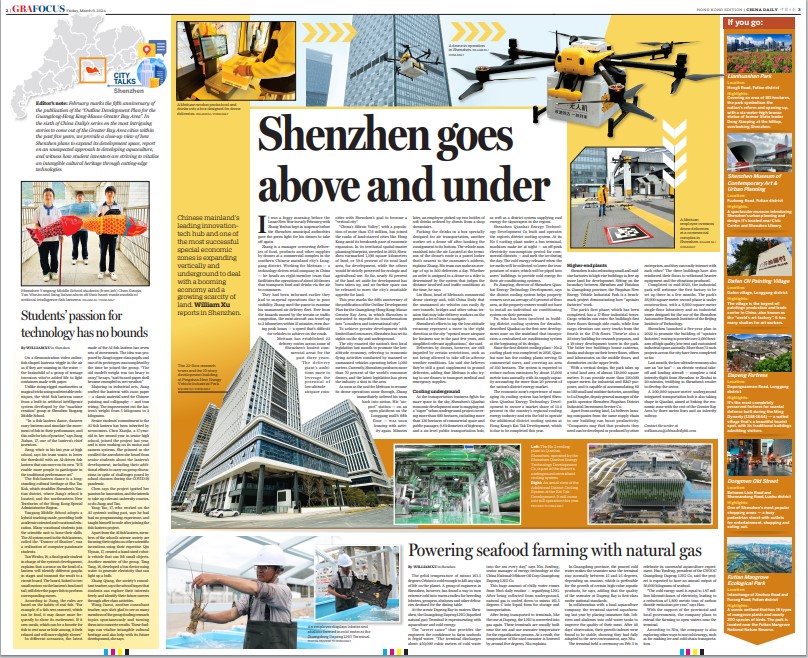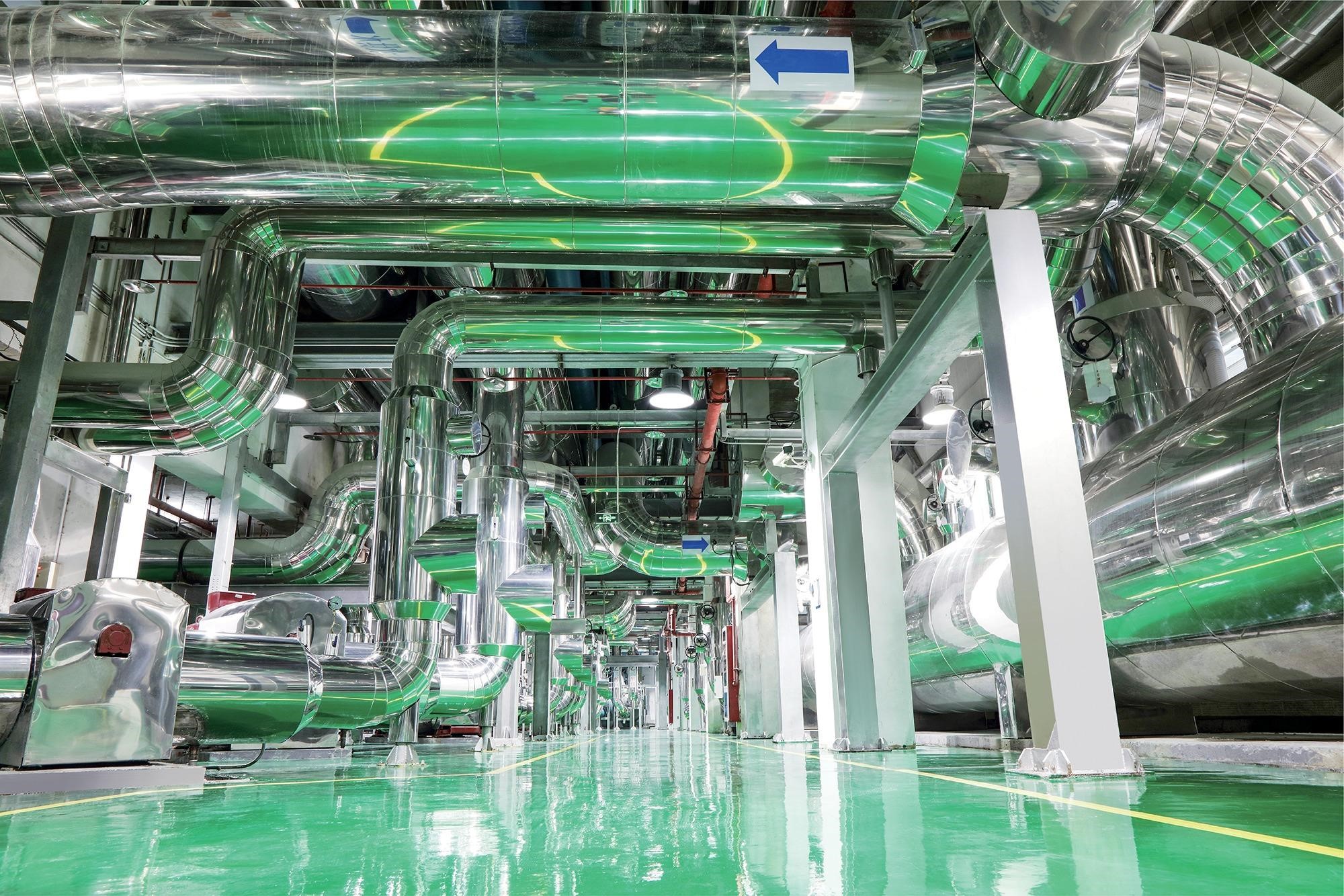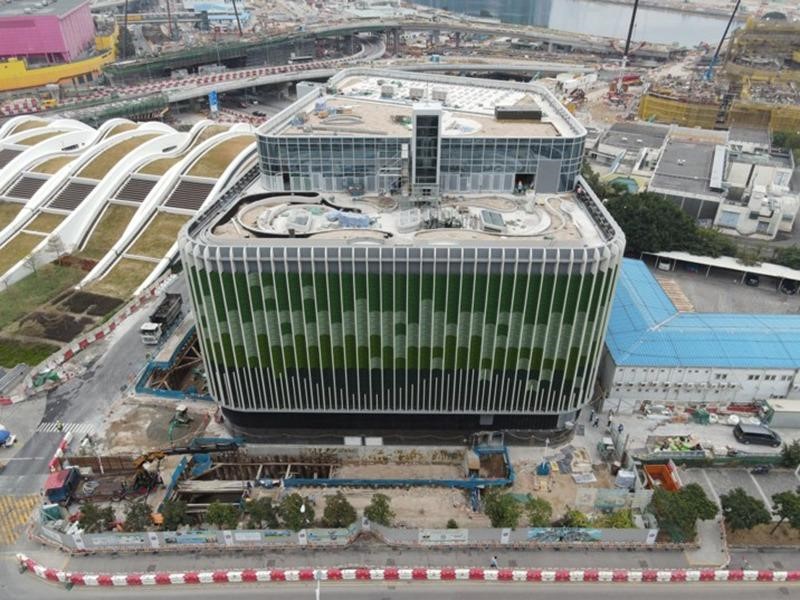Chinese mainland’s leading innovation-tech hub and one of the most successful special economic zones is expanding vertically and underground to deal with a booming economy and a growing scarcity of land. William Xu reports in Shenzhen.

Excerpt:
Cooling underground
As the transportation business fights for more space in the sky, Shenzhen’s Qianhai economic development zone is mapping out a “super” urban underground project covering more than 600 hectares, including more than 130 hectares of commercial space and public passages, 9.8 kilometers of highways, and a six-level public transportation hub, as well as a district system supplying cool energy for skyscrapers in the region.
Shenzhen Qianhai Energy Technology Development Co built and operates the region’s district cooling system. At its No 5 cooling plant under a bus terminal, machines make ice at night — an off-peak electricity consumption period for commercial districts — and melt the ice during the day. The cold energy released when the ice melts will be collected to lower the temperature of water, which will be piped into users’ buildings to provide cold energy for their air conditioning systems.
Fu Jianping, director of Shenzhen Qianhai Energy Technology Development, says the district cooling system helps property owners save an average of 6 percent of floor area, as the property owners would not have to install an individual air conditioning system on their premises.

The
No 2 cooling plant in Qianhai, Shenzhen, operated by the Shenzhen Qianhai
Energy Technology Development Co, is part of the district's underground
centralized cooling system. (PROVIDED TO CHINA DAILY)
Fu, who has been involved in building district cooling systems for decades, described Qianhai as the first new development zone on the mainland that incorporates a centralized air conditioning system at the beginning of its design.
Since the first district cooling plant—No.2 cooling plant was completed in 2016, Qianhai now has five cooling plants serving 52 commercial users, and covering an area of 350 hectares. The system is expected to reduce carbon emissions by about 15,000 metric tons annually, with its supply capacity accounting for more than 20 percent of the nation’s district energy market.
The economic zone’s experience of managing its cooling system has helped Shenzhen Qianhai Energy Technology Development to secure a market share of 13.4 percent in the country’s regional cooling energy industry and win the bid to operate the additional district cooling system at Hong Kong’s Kai Tak Development, which is due to be completed this year.

An
aerial view of the Additional District Cooling System at the Kai Tak
Development. It uses chilled water as a cooling medium, and will come into full
operation this year. (PROVIDED TO CHINA DAILY)
From 《CHINA DAILY(HONG KONG)》

